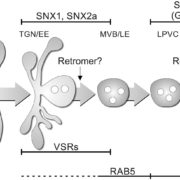
Turnover of Tonoplast Proteins
Plant Physiology, Plant Physiology: News and ViewsBy Rumen Ivanov and David G. Robinson
Our knowledge of vacuole biogenesis and the transport of proteins to the vacuole has advanced consistently over the last 30 years. In meristematic cells, the tonoplast appears to develop directly out of the endoplasmic reticulum (Viotti et al., 2013). Once it is…
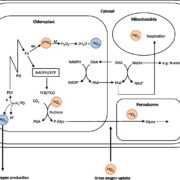
Photosynthetic Oxygen Production: New Method Brings to Light Forgotten Flux
Blog, Plant Physiology, Plant Physiology: News and Views, ResearchOxygen (O2) is evolved during photosynthetic electron transport when water is split by the oxygen-evolving complex to provide protons and electrons to the chloroplastic electron chain, thereby generating ATP and NADPH—the energy source and reducing power for plant metabolism. The majority of this chemical…
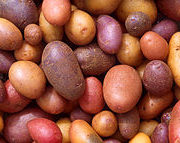
Improving on the Humble Spud
Blog, Plant Physiology, Plant Physiology: News and Views, ResearchThe humble spud. Simple, unassuming, yet vital in supporting a large proportion of the world’s population. Historically speaking, much of the research performed on potatoes (Solanum tuberosum) has gone into enhancing their disease resistance, justifiably so given the severe famines brought about through…

Live and Let Die: Phosphatidic Acid Modulates the Self-Incompatibility Response
Research, The Plant Cell, The Plant Cell: In BriefPollen tubes are remarkable vehicles that deliver immobile sperm nuclei from the stigma to the ovule during angiosperm reproduction. Their journey delicately balances turgor pressure with the precise spatiotemporal regulation of polarized growth machinery to navigate pollen tubes and their cargo to the…

Life of PPi: Soluble PPases and H+-PPase act cooperatively to keep pyrophosphate levels in check
Blog, Research, The Plant Cell, The Plant Cell: In BriefInorganic phosphate (PPi) is a byproduct of many metabolic reactions, including those involved in sucrose, sugar nucleotide, and cellulose biosynthesis. Although PPi is an important phosphate donor and source of cellular energy, high levels of cytosolic PPi are toxic, disrupting the metabolic reactions…
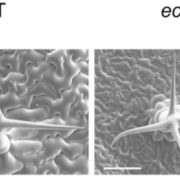
A Tale of Three Studies: Uncovering the Crucial Roles of m6A Readers
Blog, Research, The Plant Cell, The Plant Cell: In BriefThe story behind m6A (methylation of the N6 position of adenosine), the most common internal mRNA modification in eukaryotes, has long been a source of intrigue. This epitranscriptomic mark is deposited at specific mRNA sequences by m6A writers and removed by m6A erasers. The m6A marks recruit and anchor…
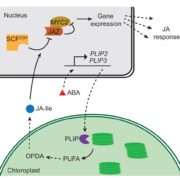
The Lipase Link: Abscisic Acid Induces PLASTID LIPASES, Which Produce Jasmonic Acid Precursors
Blog, Research, The Plant Cell, The Plant Cell: In BriefCrosstalk, crosstalk— it’s a word that keeps coming up. Indeed, and perhaps not surprisingly, plant hormone signaling pathways all seem to affect each other to some extent. For example, the MYC2 transcription factor plays roles in abscisic acid (ABA) and jasmonic acid (JA) signaling in the response…

Divide and Conquer: High-Throughput Screening of Chlamydomonas Cell Cycle Mutants
Blog, The Plant Cell, The Plant Cell: In BriefCell division is essential for growth and reproduction. The cell cycle machinery is well conserved between yeast and animals, but whether this conservation extends to the plant lineage is not clear, having diverged over two billion years ago: ample time and opportunity for divergence in sequence and…
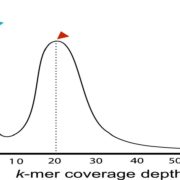
Review: A guide to sequence your favorite plant genomes (App. Plant Sci)
Plant Science Research WeeklyEvery year, genome assembly gets faster and cheaper. Li and Harkness provide a practical guide to today’s methods, with caveats and precautions that need to be considered at each step, even questions to ask before embarking on a sequencing project. Topics include how to estimate genome size and complexity,…

